The History of Photography: 1979
by Matthew Cole
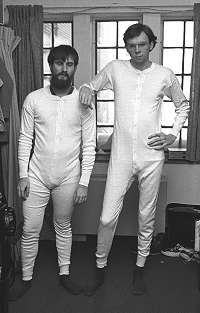 |
| Dress in Layers: A couple of weeks before we were to go to Winnepeg for the total eclipse in February, we looked in the paper and the high for the day was -56F. Ouch. A couple of us got union suits, and here tried them on to the amusement of all. That's me on the right. Photo by Dave Dahms, late January 1979. |
Spring Break! Let's go to...Winnepeg! Eclipse trip to Manitoba in late February. Buy a Vivitar "Professional" tripod with center-column braces. So-called "Professional" Vivitar tripod arrived sans a handle on its head, the resourceful Dave Dahms crafts one for me for the eclipse trip out of scrap metal and a screwdriver shaft in the welding class he's taking. Also buy the Vivitar 600 f/8 Series 1 solid glass Catadioptric lens, made by Perkin-Elmer, then stupidly shoot infrared Ektachrome of the eclipse itself through this thing. It is a very unsatisfactory unit. Years later, when the Perkin-Elmer built Hubble telescope turns out to be near-sighted, I am perhaps the only person in America not surprised. Fortunately, Dahms has a 500mm f/8 Spiratone mirror lens and shoots Kodachrome through it. Just for grins, try using the 600 indoors (at minimum focus distance of 23 feet) with 135mm fresnel on Vivitar 283; nice idea, but everyone has red eye like they're possessed. Buy a Kodak Reversal Processing kit on clearance at Woolco and shoot some Panatomic X (ASA 32) and develop as slides. It's pretty cool but quite a hassle. Shoot house picture with Rolleicord but accidentally have pressure plate on 35mm setting. All photos slightly out of focus, though not so you'd notice just looking at the negative. Brazenly bitch out house for looking like a bunch of idiots and tell them we're going to re-shoot until they look good. Next roll works fine. Around this time I build my version of the Megaflash pioneered by Dahms, a 2 head electronic "studio" flash, if you can consider 100w/s heads as studio units. Still, Dave's had proven useful in doing house pictures etc. and it was nice to have one. Learn new respect for electricity when I carelessly discharge capacitors through screwdriver, welding it to the aluminum case. Unit also proves useful for blowing up resistors. I build a sound trigger to Dave's specifications, which astonishingly still works. I modify a cloth and vinyl Coast camera bag into a bicycle handlebar bag, a sewing effort of which I am inordinately proud. Photograph the UDA Spring Formal using Dave's Canon TX cameras, one in color for the real photo, one in B&W for an ID shot with couples holding a number. Get everyone to pre-pay. Congratulate selves on professionalism. Unfortunately, the real camera's flash sync was defective; it would fire the flash, just not when the shutter was open (it would be like using M or FP sync instead of X). Roll of "real" shots comes back blank (but free!). We issue refunds and a free 5X7 of the ID shot. See below. Oh well.
More Photo Hints from 1979
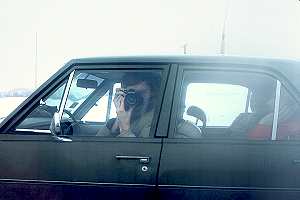 |
| Focus All Your Attention on Your Photography: Effective photography requires a single-minded dedication and all your attention without regard for outside distractions. Like driving. Here I am shooting out the driver's window of the 1972 Plymouth Valiant as we cruise through North Dakota for the 1979 eclipse. Photo by Linc Wainright, Dahms's Canon TX, a flare-prone Vivitar 35mm through the side window of an inadequately defrosted VW, Kodachrome 64 |
|
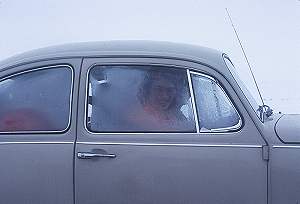 |
| Here's what I risked my life and the lives of my passengers to take. Dave still drives this car. Those VWs didn't have blowers for the heating system so the windows would frost over almost immediately and stay that way. Compare it to the Valiant which has four people in it instead of three. The lack of blower also made the VW useless in keeping us warm at the viewing site.Fujica ST-801, Fujinon 50 f/1.8, Kodachrome 64 |
|
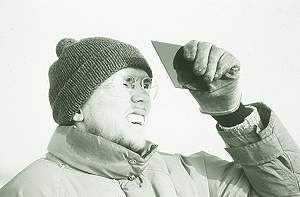 |
| Protect Your Optics: We watched the progress of the eclipse towards totality through some number 12 welder's glass. We were also playing around with reversal Panatomic-X, a now discontinued ASA 32 black & white film from Kodak. Unfortunately, you were supposed to shoot it at ASA 80 for reversal processing. Oh well. Speaking of unsuccessful experiments, you can see my progress in the Pearson House Winter Quarter Beard Growing Contest. |
|
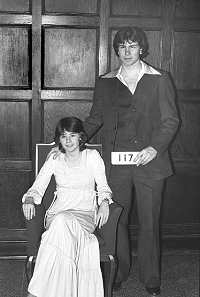 |
| Hey Baby, what's your sign? I have no idea who these folks are, couple 117 at the aforementioned Formal, victims of a bad flash sync and contemporary fashions. On second thought, maybe it wasn't so bad that the actual photos didn't come out. Photo on Dahms' good Canon TX, Vivitar 35mm lens, flash unknown |
|
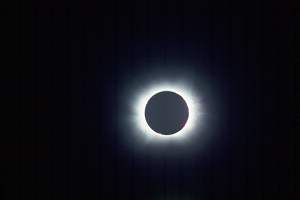 |
| Meter Carefully For Backlighting: When the light source is behind your subject it is best to meter for the front of the subject so details aren't lost. Sometimes fill flash can help fill in the details, although not at all distances. Canon TX, Spiratone 500mm f/8 mirror lens, Kodachrome 64 |
|
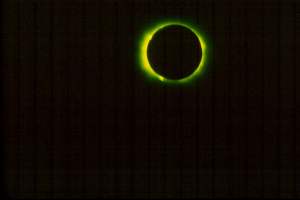 |
| Choose Your Film Carefully: Overtaken by a temporary bit of insanity, we decided to shoot the eclipse partly on infrared film. At least we didn't have trouble keeping it cold! Fujica ST-801, Vivitar Series 1 600 f/8 Solid Catadioptric, Kodak Infrared Ektachrome |
|
e mail me

